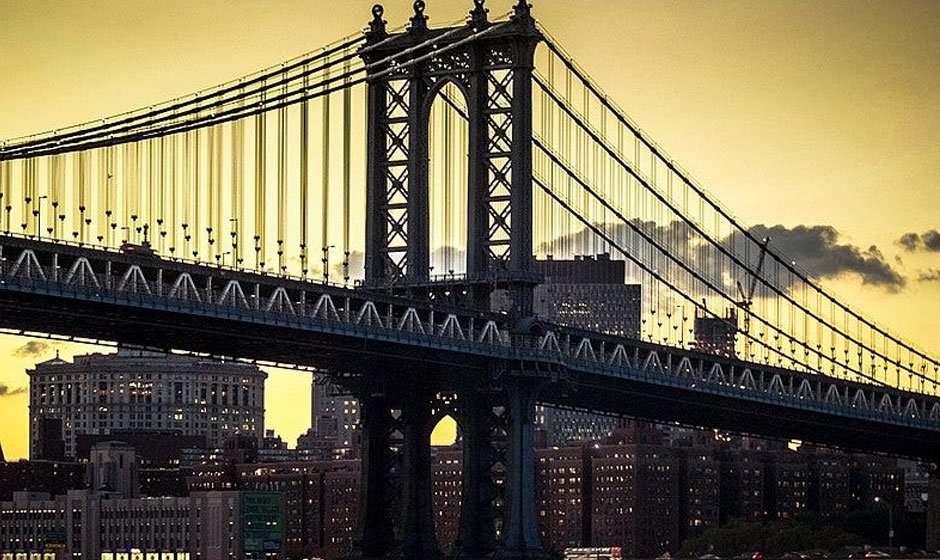Bridges are more than just structures that connect two land masses. They represent the vision, ingenuity, and determination of mankind to overcome challenges and push boundaries. From ancient times to modern eras, bridges have played a significant role in shaping human civilization and connecting cultures across continents.
In this blog post, we will take a journey across the world to explore some of the most iconic bridges that span across continents and stand as a testament to human engineering and design.
Golden Gate Bridge – San Francisco, United States
The Golden Gate Bridge in San Francisco is one of the most recognizable and beloved landmarks in the United States. Completed in 1937, it spans across the Golden Gate Strait and connects the city of San Francisco to Marin County.
With its distinctive orange color and Art Deco design, the Golden Gate Bridge spans 2.7 kilometers and stands as a symbol of American engineering excellence. It attracts millions of tourists every year who come to marvel at its grandeur and walk or cycle across it.
Vasco da Gama Bridge – Lisbon, Portugal
The Vasco da Gama Bridge in Lisbon is the longest bridge in Europe and one of the longest in the world. Spanning across the Tagus River, it connects the north and south ends of Lisbon and was opened to traffic in 1998.
Named after the famous Portuguese explorer, this cable-stayed bridge stretches over 17 kilometers and has two levels – one for cars and another for trains. The Vasco da Gama Bridge is not only an engineering marvel but also a stunning sight to behold, especially when lit up at night.
Danyang–Kunshan Grand Bridge – Jiangsu, China
The Danyang-Kunshan Grand Bridge in China holds the Guinness World Record for being the longest bridge in the world. It spans over 164 kilometers and connects the cities of Danyang and Kunshan on the Beijing-Shanghai High-Speed Railway.
Completed in 2010, this bridge has more than 10,000 pillars and can withstand earthquakes, typhoons, and temperature variations. The Danyang-Kunshan Grand Bridge is not just an impressive feat of engineering but also plays a crucial role in easing traffic congestion and facilitating high-speed train travel in China.
Akashi Kaikyō Bridge – Hyogo, Japan
The Akashi Kaikyo Bridge in Japan is the world’s longest suspension bridge with a central span of 1.2 kilometers. It connects the city of Kobe to Awaji Island and is an important link in the Great Hanshin Expressway.
Opened in 1998, this bridge was an engineering challenge due to its location in a seismically active area. However, it was designed and built to withstand winds of up to 286 kilometers per hour and earthquakes of up to magnitude 8.5 on the Richter scale.
Bosphorus Bridge – Istanbul, Turkey
The Bosphorus Bridge in Istanbul, also known as the First Bridge, is an iconic structure that connects Europe and Asia. Completed in 1973, it spans across the Bosphorus Strait and has become a symbol of the city.
This suspension bridge is over a kilometer long and provides stunning views of Istanbul’s skyline. It has also served as a backdrop for various cultural events, making it a popular tourist attraction.
Øresund Bridge – Malmo, Sweden and Copenhagen, Denmark
The Øresund Bridge is an engineering wonder that connects the cities of Malmo in Sweden and Copenhagen in Denmark. Opened in 2000, this bridge is a combined railway and motorway bridge tunnel that spans over 7 kilometers across the Øresund Strait.
The innovative design of this bridge includes an artificial island that serves as an interchange between the bridge and tunnel sections. It has not only improved transportation between Sweden and Denmark but also promoted cultural exchange and economic growth in the region.
Tower Bridge – London, United Kingdom
While not technically a bridge that connects two land masses, the Tower Bridge in London is an iconic structure that spans across the River Thames. Completed in 1894, this bascule and suspension bridge has become synonymous with London’s skyline.
The Tower Bridge is not only a vital part of London’s transport network but also one of its most popular landmarks. Visitors can take a tour inside the bridge to learn about its history and engineering or simply admire it from the banks of the River Thames.
Ponte Vecchio – Florence, Italy
The Ponte Vecchio in Florence is not just a bridge but also a piece of living history that connects past and present. Dating back to 1345, this medieval stone arch bridge spans across the Arno River and has been an important trade route for centuries.
What makes this bridge unique is the line of shops that are built along its length, making it one of the oldest continuously used shopping locations in the world. The Ponte Vecchio is not only a stunning example of Italian Renaissance architecture but also an integral part of Florence’s identity.
Bandra-Worli Sea Link – Mumbai, India
The Bandra-Worli Sea Link in Mumbai is an engineering marvel that connects the western suburbs of Mumbai to South Mumbai. Opened in 2009, this cable-stayed bridge spans over 5 kilometers and has become a symbol of modern India.
The Bandra-Worli Sea Link not only eases traffic congestion but also provides breathtaking views of the Arabian Sea and Mumbai’s skyline. It has become a popular tourist spot and a favorite spot for locals to take walks or enjoy the sea breeze.
Gateshead Millennium Bridge – Newcastle upon Tyne, United Kingdom
The Gateshead Millennium Bridge is not your typical bridge. Completed in 2001, this tilting bridge spans across the River Tyne and connects the cities of Newcastle upon Tyne and Gateshead.
What makes this bridge unique is its innovative design, which allows it to tilt and open for passing ships. It has become an iconic landmark in the region and has won multiple awards for its engineering and architectural excellence.
In Conclusion
Bridges have been a pivotal part of human civilization, connecting communities, facilitating travel, and promoting trade and tourism. From the impressive stone arch bridges of ancient Rome to the modern cable-stayed bridges of today, bridges have evolved with advances in technology over the years.
Moreover, bridges are more than functional structures, they have become symbols of cities and countries – representing progress, innovation, and culture. With the use of concrete trailers, bridges have become easier and faster to build, though still require expert engineering skills. They bring people together in cultural exchange and economic growth, promoting mutual understanding, and connecting communities.
The next time you cross a bridge, take a moment to appreciate not only its impressive engineering but also its impact on society. Bridges are more than just structures; they are symbols of human ingenuity and a testament to our ability to overcome challenges and connect.






